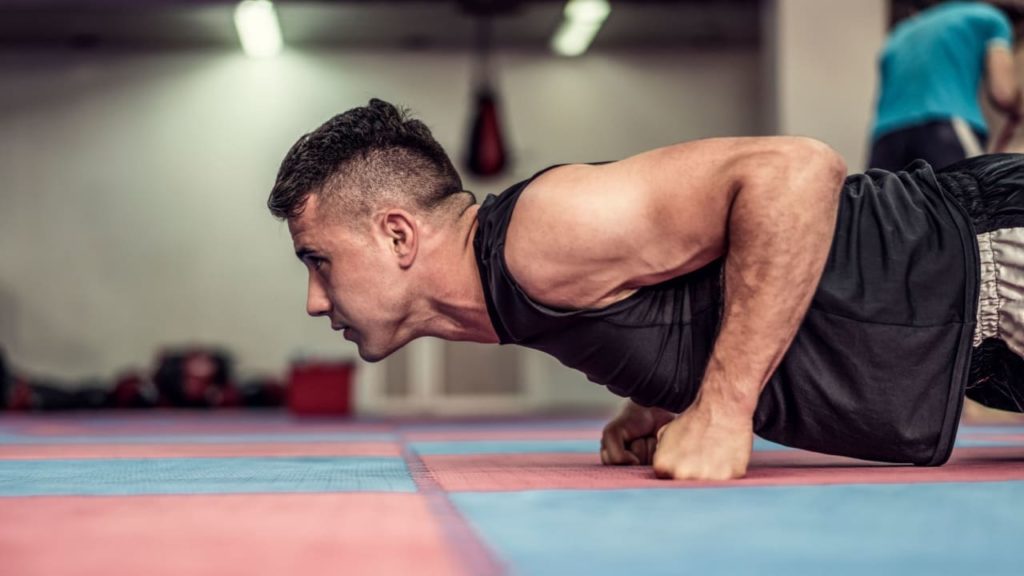For athletes aiming to elevate their game, mastering Heart Rate Variability (HRV) is crucial. This guide focuses on HRV’s vital role in training and recovery. Learn about the normal HRV range and how your workouts, from high-intensity intervals to endurance sessions and recovery activities, affect HRV. With our physician-run company and CBD store with quality products, you will be equipped with the best resources to enhance your athletic performance.
What Does Heart Rate Variability Mean?
Heart Rate Variability, or HRV, is a simple but powerful health measure. It calculates the time gaps between your heartbeats, known as R-R intervals, and is measured in milliseconds. Optimal heart rate variability is a good indicator of the balance between your body’s stress and rest responses, governed by the autonomic nervous system. A higher HRV means your body is better at adapting to stress, exercise, and relaxation. A lower HRV can indicate potential health issues, like heart conditions or stress.
Maximizing Performance: Mastering Heart Rate Variability for Athletes
For athletes, heart rate variability (HRV) is more than just a health statistic; it’s a key to enhancing performance. By tracking HRV, athletes can gauge their readiness for intense training, understand their recovery needs, and monitor stress. Using advanced tools or mobile apps with heart rate sensors, athletes get a clear view of how their autonomic nervous system is functioning.

Heart Rate Variability During Exercise
Heart Rate Variability (HRV) during exercise is a dynamic and insightful metric that provides valuable information about your body’s response to physical activity. Here’s what you need to know:
Initial Increase: At the start of exercise, there is typically a quick rise in heart rate. This initial surge is a natural response to the body’s increased demand for oxygen and energy to support muscle contractions and increased metabolic activity.
Steady State: Once you reach a consistent intensity level during exercise, your heart rate tends to stabilize. This period of steady-state athlete heart rate variability indicates that your cardiovascular system is efficiently delivering oxygenated blood to your working muscles.
HRV Fluctuations: Despite the steady heart rate, normal HRV may still fluctuate during exercise. This variability reflects the balance between the sympathetic (fight-or-flight) and parasympathetic (rest-and-digest) branches of the autonomic nervous system. While sympathetic activity increases to support exercise, parasympathetic activity decreases.
Training Impact: Regular exercise can lead to improved athlete heart rate variability over time. As your cardiovascular fitness increases, your heart becomes more efficient, allowing it to respond to changes in intensity with less dramatic fluctuations in HRV.
Recovery: After a workout, your HRV may initially be lower due to the lingering effects of sympathetic activity. However, as you enter the recovery phase, HRV should gradually increase. Monitoring this recovery heart rate variability in athletes can provide insights into your body’s readiness for subsequent workouts.
Training Zone: Athletes often use heart rate variability to determine their training zones. HRV-guided training involves adjusting exercise intensity based on HRV measurements. If HRV is high, it may indicate that the body is well-rested and can handle a more intense workout.
To keep a good heart rate variability chart, athletes can utilize monitoring tools like heart rate monitors with HRV capabilities or specialized fitness wearables to access real-time data during their workouts. This data ensures that training is optimized to achieve fitness goals while minimizing injury and overtraining risks.

The Effect Of Different Types Of Training On Heart Rate Variability
Each type of training impacts normal HRV differently, and understanding these effects is crucial for athletes to optimize their workouts and recovery. So, let’s delve deeper into how various forms of athletic performance and training impact your heart rate:
- Aerobic Training (Endurance): Activities like running, cycling, or swimming typically cause a sustained increase in good heart rate variability. This steady rise is crucial for improving cardiovascular endurance and efficiency.
- Anaerobic Training (High-Intensity): Intense activities like sprinting or heavy weightlifting lead to rapid, significant spikes in heart rate, impacting athlete heart rate variability (HRV). These bursts are shorter in duration but highly demanding on the heart, enhancing power and strength.
- Interval Training: Involving alternating periods of high and low intensity, this training causes fluctuating normal HRV. This variation trains the heart to efficiently increase and decrease its rate, improving cardiovascular response and recovery.
- Strength Training: While lifting weights, your heart rate increases, but not as much as with aerobic exercise. It’s more about strength and muscle building than cardiovascular endurance.
- Restorative Practices (Yoga, Tai Chi): These involve lower heart rate increases, focusing on relaxation and control. They’re essential for recovery and balancing more intense training.
Heart Rate Variability While Sleeping
Quality sleep is a game-changer for athletes, and Heart Rate Variability (HRV) is your secret ally in assessing it. Normal HRV during sleep follows a cyclic pattern influenced by the sympathetic and parasympathetic nervous systems. It exhibits higher variability during lighter sleep stages and lower variability during deep sleep stages, which is essential for physical restoration and recovery. Here’s how heart rate variability is relevant to athletes during sleep:
Sleep Cycles and HRV: Athlete heart rate variability varies during sleep and is influenced by the autonomic nervous system. It’s higher during lighter sleep stages and decreases during deep sleep, which is crucial for physical recovery. In REM sleep, HRV goes up, often linked to vivid dreams.
Personalized HRV: Normal athlete heart rate variability during sleep varies based on age, fitness, and individual factors. It’s like a unique fingerprint. Devices with HRV sensors can track your sleep and reveal patterns that are specific to you.
Detecting Sleep Issues: Monitoring your sleeping heart rate variability chart can spot anomalies. If your HRV during sleep is consistently abnormal, it could be a sign of sleep disorders like sleep apnea.
What Is A Good Heart Rate Variability?
For athletes, a well-structured Heart Rate Variability (HRV) chart is a crucial asset. It reflects a finely tuned autonomic nervous system, offering insights into how your body handles stressors, whether they’re internal or external.
An optimal heart rate variability showcases your body’s efficiency in managing stress while maintaining a balance between the sympathetic and parasympathetic systems. This balance is essential for optimal performance, enabling you to adapt to changing conditions, whether it’s varying workout intensities or the stress of competition.
Moreover, a strong heart rate variability in athletes signifies stress resilience, allowing you to cope with the pressures of training and competition without excessive strain. Beyond performance, it contributes to overall health, reducing the risk of cardiovascular diseases, enhancing the immune system, and promoting general well-being.
Factors like baseline measurements, age, training history, and sport-specific requirements influence your optimal HRV. Regular HRV monitoring empowers you to fine-tune your training, striking the right balance between intensity and recovery, leading to improved performance. In essence, HRV isn’t just about numbers; it’s about optimizing your body’s ability to excel in your sport.

Heart Rate Variability Training For Injury Prevention
In addition to its performance-enhancing benefits, HRV can play a crucial role in injury prevention. Monitoring HRV can help identify signs of overtraining and fatigue, both increasing the risk of injuries. HRV acts as an early warning system, allowing athletes to prioritize recovery and maintain their long-term health and athletic longevity.
Athletes can use heart rate variability training as an early warning system to reduce the risk of injuries. HRV patterns can indicate excessive stress on the body, leading to overuse injuries. Athletes can take preventive measures such as:
- Adjusting Training Loads: Modifying Training Intensity and Volume.
- Incorporating Restorative Practices: Including recovery sessions in the training plan.
- Prioritizing Recovery: Focusing on Post-Exercise Recovery Techniques.
- Ensuring Adequate Sleep and Rest: Emphasizing the importance of quality sleep.
- Monitoring heart rate variability in athletes consistently: tracking HRV trends for injury risk assessment.
These strategies help athletes maintain long-term health and minimize the chances of injuries, ultimately supporting their athletic longevity.
Afterthoughts On Heart Rate Variability Training
In conclusion, Heart Rate Variability (HRV) stands as a versatile and invaluable tool for athletes of every level. Whether you’re tracking your normal heart rate variability during restful sleep or intense workouts, this physiological measure offers profound insights. A normal HRV represents more than physical fitness; it embodies an athlete’s adaptability, resilience, and readiness.
Whether you’re an aspiring athlete honing your skills or a seasoned competitor aiming for the highest level in sports like MMA and UFC, HRV is your trusted guide. It equips you to fine-tune your training, reduce injury risks, and conquer your athletic ambitions. Embracing heart rate variability training is the key to unlocking your full potential, not only in your sport but also in your overall well-being. Your peak performance and well-being are within reach.







